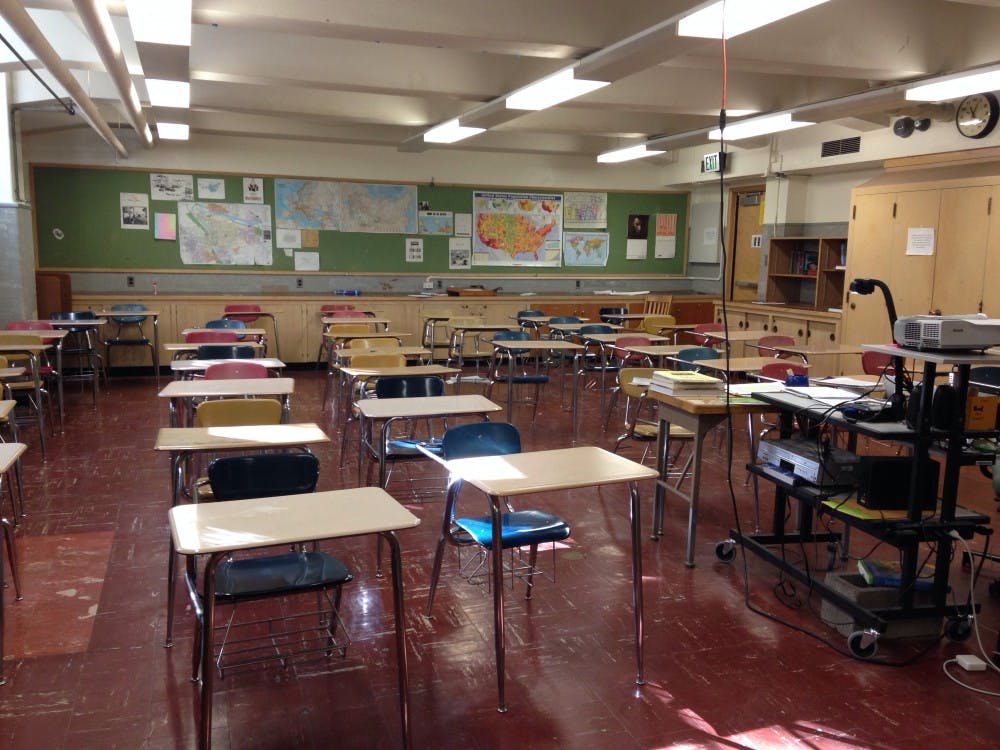Lydia Laythe |
The tension is palpable in the halls of public schools across Portland. Teachers, students, parents and administrators wait for a seemingly inevitable strike. Portland Public School teachers voted, almost unanimously, to strike last Wednesday. This vote authorized the first strike in the history of the school system. Despite several meetings, no agreement has been reached yet.
This vote will affect more than just the teachers and students in the Portland Public School system – it affects students at the University of Portland as well.
Many education majors at UP are placed in Portland Public Schools, as well as other school districts, to fulfill requirements of their degree and licensure.
The state of Oregon requires about 16 weeks of full-time student teaching experience, work samples, along with several other components in order for students to receive their license to teach.
At a meeting on Monday, union leaders submitted a notification of strike and the plan to walk out on Feb. 20 if an agreement is not made by then. According to plans released by Portland Public Schools, if a strike is imminent, schools will be let out early on Feb. 19, and, in the case of a walkout, will remain closed for three days in an attempt to reorganize and train replacements.
A strike would disrupt the student teaching experience and students’ ability to create a work sample. However, there is some flexibility in the licensure process to account for situations like this.
Sophomore Mari Stevens volunteers at George Middle School, where she says the tension is tangible.
“There’s definitely a lot of uneasiness between everyone,” Stevens said. “It’s been very awkward.”
According to Associate Dean of the School of Education Bruce Weitzel, state regulations have built in procedures that allow for licensing agents to take external circumstances into account. Weitzel also contacted the Teacher’s Standards and Practices Commission which oversees licensure regulations, and asked about this specific situation.
“Their comment was, ‘We’ll work with the students if that becomes the case,’” Weitzel said.
The combination of formal procedures and flexible regulations allows administration in the School of Education to insure each student is given the opportunities necessary to get their license. But Weitzel says that’s not a problem, as most education majors graduate with 1,500 hours of field experience, which surpasses the minimum requirement of about 1,200.
“They’ve had plenty of time,” Weitzel said. “We over-provide opportunities for students to apply what they learn in the classes they take here. We’re in a pretty good place as far as our students go.”
If a strike occurs, UP students placed in Portland Public Schools were instructed not to attend their placements until the day after the strike ends and teachers return to their classrooms.
“They are University of Portland students,” Weitzel said. “They are not members of a teacher association for Portland Public Schools or the Portland Public School district. We’re guests in those classrooms. We’re basically outside of that political decision-making process and outside of the strike itself.”
To insure that students stay out of the strike and the decision-making process, students were instructed to remain unbiased and refrain from any discussion or activity surrounding the strike.
Negotiations began last April, and while progress has been made, strikers hope to put pressure on the PPS leaders to make a decision.
“We’re not supposed to know much about it,” Stevens said. “I’m not really sure what to expect. We haven’t even talked about it in our (education) classes. I brought it up in one of my (education) classes … and some people in my class didn’t even know what it was. It’s kind of interesting.”
But despite any confusion or discomfort felt in the classrooms, Weitzel is convinced that students will not be hurt or limited by the strike.
“My belief is that we will work with our students, regardless of what happens, to make sure that they’re not impacted,” Weitzel said. “But it’s really an issue that lives between the teacher association, the teachers and the district itself. And that’s for them to resolve, and we will abide by whatever their decisions are.”
Anatomy of a Strike
The teachers have many demands, but one of the most significant is to reduce class sizes. Portland Public Schools has about 48,000 students in the system with about 2,900 teachers staffing the schools. Oregon public schools have the third largest class sizes in the country.
Portland Public Schools teachers aren’t the only ones critiquing class size. According to the Institute of Education Sciences, class size reduction is one of the few reform strategies that has been proven through randomized, thorough experiments to increase student achievement .
Based on this information and similar studies, some states have instituted a maximum class size. Florida, for example, pushed legislation limiting between 18 to 25 students per classroom.
According to a written statement released by Portland Public Schools Superintendent Carole Smith, the goal of negotiations “is to reach an agreement that adds teachers to schools, adds school days, raises teacher pay and maintains strong benefits, and helps Portland keep and hire the best educators for our classrooms.”
To see the full Portland Public Schools’ mediation proposal to the teachers, go to http://www.pps.k12.or.us/files/laborrelations/Latest-PPS-Offer.pdf








